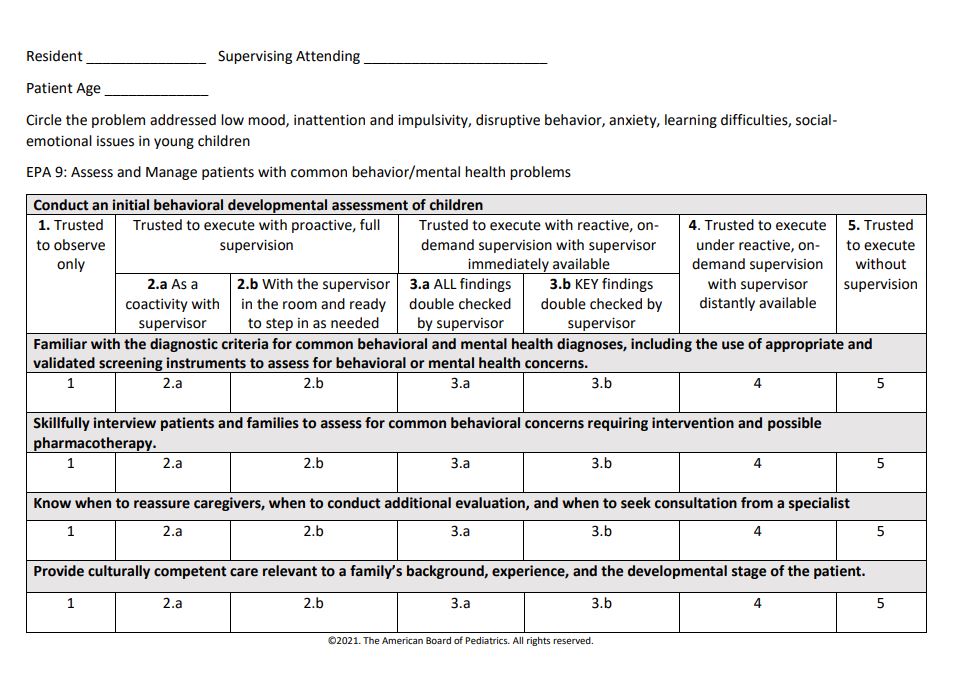Medical Education: Resident
Medical Education 15: Resident 6
515 - Use of the American Board of Pediatrics’ Entrustable Professional Activities (EPA) to Assess Readiness of Resident Autonomy in the Continuity Clinic: A Feasibility Study
Monday, May 1, 2023
9:30 AM - 11:30 AM ET
Poster Number: 515
Publication Number: 515.423
Publication Number: 515.423
Grace Black, University of Rochester, Rochester, NY, United States; Lynn C. Garfunkel, University of Rochester, Pittsford, NY, United States; Constance D. Baldwin, University of Rochester School of Medicine and Dentistry, Mendon, NY, United States; Caren E. Gellin, University of Rochester, Rochester, NY, United States

Grace Black, MD (she/her/hers)
Associate Professor of Pediatrics
University of Rochester
Rochester, New York, United States
Presenting Author(s)
Background: Primary care education of pediatric residents occurs primarily in weekly continuity clinic (CC). Prior to this feasibility study, there was no formal assessment at the CC study site, of a resident’s ability to independently assess and manage patients with common behavioral or mental health problems, with a precepting attending available for patient discussion (As a primary care exemption site, residents are not always directly observed with a patient after the resident has completed 6 months of training).
Objective: To assess the use of EPA 9’s supervision scale as a formative tool to increase faculty confidence in assessing residents’ ability to independently assess and manage patients with common behavioral and mental health conditions.
Design/Methods: Prior to the start of the 2022-23 academic year, we surveyed CC residents on their comfort in independently assessing and managing patient with 6 behavior and mental health conditions outlined in EPA 9. Similarly, we surveyed attending physicians on their ability to assess residents’ readiness to independently care for patients with the same 6 conditions. An EPA passport survey was created (see attached figure). Following a resident encounter in CC where a patient had one of the identified problems, the precepting attending completed the EPA passport (in discussion with the resident) to assess the resident’s level of entrustability in providing independent care. After 3 months, follow up surveys were given to faculty to assess feasibility and utility of the passport tool and to residents to assess helpfulness in guiding self-reflection.
Results: The EPA passport was used following 25 patient encounters by 7 faculty reviewing residents in all years of training. All faculty who completed the follow-up survey felt the passport increased their comfort in assessing residents’ readiness to see patients independently. See the attached table for additional comments from faculty. Though limited in number, all residents (n=6) who completed follow up surveys answered yes to the question “Did the passport encourage self-reflection after your patient encounters.”
Conclusion(s): The EPA Passport is a feasible, practical and self-reflective tool to help determine resident entrustability to independently assess and manage common behavioral and mental health conditions in a busy continuity clinic. We anticipate that routine use of the passport tool will become part of ongoing learning assessment in the CC setting.


